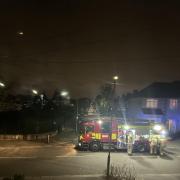
The London borough of Richmond is continuing its reputation of “one of the safest areas in London” as it sees a steady decline in overall crime rate over a 2 year period.
Newly published police data highlights a 31% decrease in Richmond’s crime rate from March 2019 to February 2021 with the crime rate (crimes per 1000 people) of 5.8 in March 2019 declining to 4.0 in February 2021.
The three most common types of crime, from March 2020 to February 2021, were antisocial behaviour (crime rate of 37.8), violence and sexual offences (16.6) and vehicle crime (10.2).
The two most prevalent types of crime in Richmond, antisocial behaviour and violence and sexual offences, mirror those of the whole of London. However, it is interesting to see that vehicle crime (10.2) was more prevalent than violent crime (9.8), a finding which does not correlate with the city rates, in which violent crime is 50% more common than vehicle crime.
Richmond’s three least prevalent types of crime were possession of weapons (0.3 crime rate), theft from a person (0.7) and uncategorised crime (0.8).
It is clear that as restrictions and consequent lockdowns have been introduced by the government, the crime rate has been seen to decrease dramatically. For example, there was a near 40% decrease from February 2020 to April 2020 as the country jumped from normality into a strict lockdown.
An identical pattern can be seen as the government has loosened restrictions as there was a 40% increase from April (3.7) to June 2020 (5.2).
This leads on to a critical point that overall crime rates would likely be much higher, had there not been a forceful and unprecedented pandemic, and so we must prepare to see more alarming rates in the aftermath of COVID-19.
To compare Richmond to the other boroughs of London, it is placed with the fifth lowest overall crime rate of 59.1 (cumulative rates of each month from March 2020 to February 2021).
Kingston upon Thames, also in South West London, has the lowest final crime rate of 56.2. This is closely followed by Harrow and Sutton with rates of 57.1 and 58.4 respectively.
Moving to the three most crime high boroughs, the City of London has the highest rate of 468.5 which is more than three times that of the second and third highest boroughs, Westminster and Kensington and Chelsea, who have crime rates of 148.5 and 102.7 respectively. Admittedly, the City of London has a much lower population density than the other boroughs.
It is perhaps surprising but also very intriguing to see that these three boroughs could be classified as the most dangerous since they make up the top three most expensive boroughs of London with City of London having an average employee wage of £53,200, followed by Westminster with £35,400 and in third place, Kensington and Chelsea with £33,700. This perhaps suggests a correlation between crime and wealth. There are many possible explanations for this, such as these areas being a greater attraction to criminals due to their high value or there being more police on patrol, meaning that a higher proportion of crimes will be reported.
All in all, Richmond, alongside many other boroughs, has seen a stark decrease in crime, something very positive for a borough where crime had increased at an alarming rate in prior years. However, it must be acknowledged that there may be future waves of crime as the government presents its strategy to get life back to normal.



























